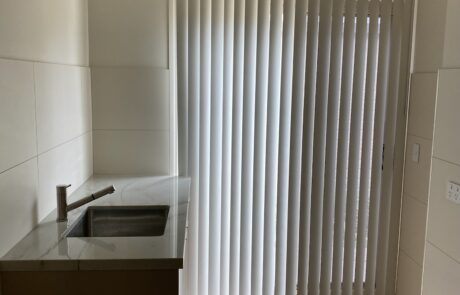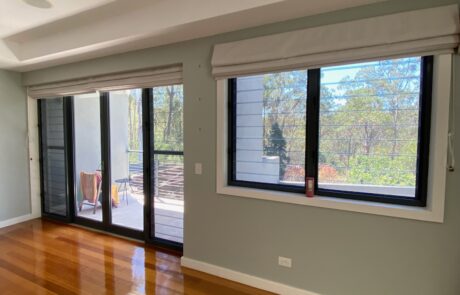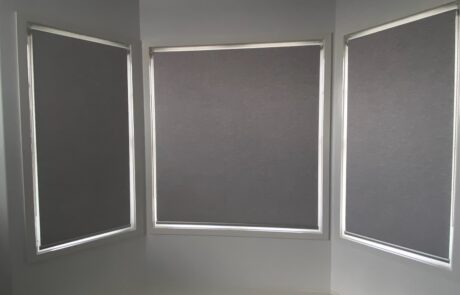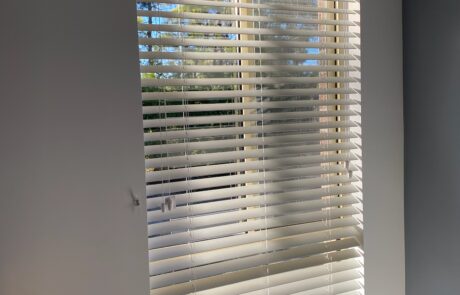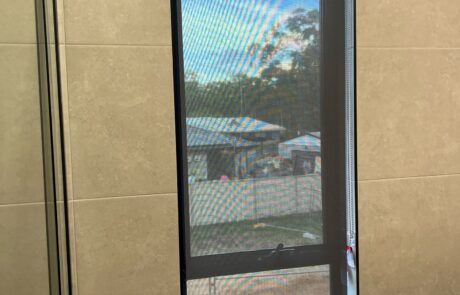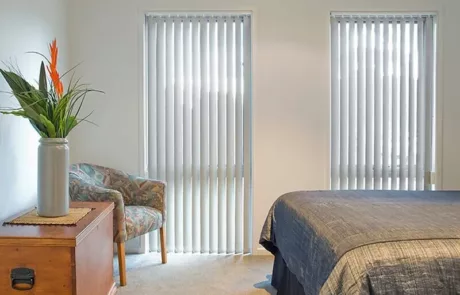

Free Quotes Within
48 Hours

Of 4 to 6 Weeks

Enjoy light control, insulation, privacy and timeless style with custom-made roman blinds
At Custom Windows Furnishings, we offer custom-made Roman blinds to add style and functionality to your interior decor.
These versatile window treatments provide a sleek and modern look while allowing you to control natural light effortlessly. Crafted from high-quality fabrics, they come in various textures and patterns to complement any room’s aesthetics.
Wherever room you’re in, these window furnishings help you to enjoy privacy and insulation as these blinds can be customised for a snug fit. Whether you’re looking to update your home or office space, they are the perfect choice.
Are you ready to experience the perfect blend of fashion and function? Transform your windows into focal points of elegance and practicality today by calling (07) 3376 5555 or book your free consultation online for a competitive quote.
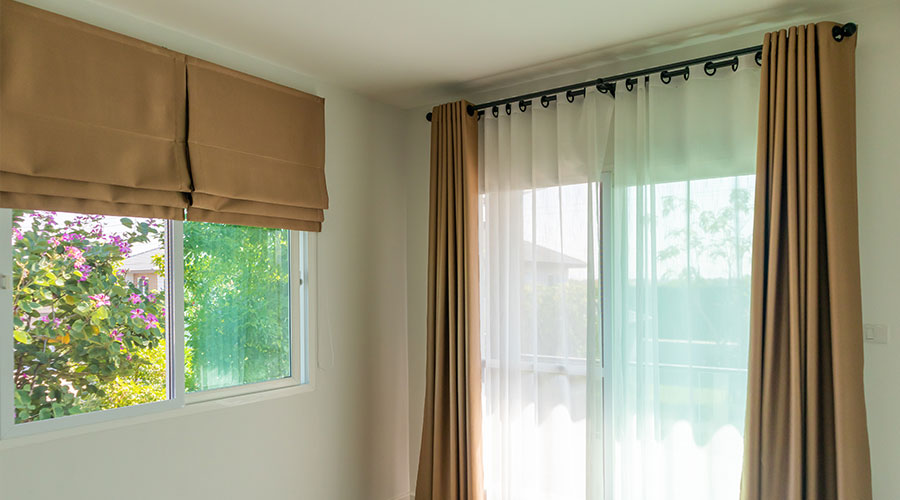
What are the best types?
The best types of blinds depend on your specific needs and preferences. Here are some popular options:
Classic Blinds
These are the standard blinds, featuring clean lines and a timeless look. They work well in most settings and come in various fabrics and colours to suit your decor.
Blockout Blinds
Ideal for bedrooms or spaces where you need to control light and maintain privacy. Blockout blinds are designed to block out light completely when closed.
Sheer Blinds
If you want to filter in soft, diffused light while maintaining some privacy, sheer blinds are a great choice. They create an elegant, airy ambience.
Patterned Blinds
To add a touch of personality and style to your space, consider patterned blinds. They come in a variety of designs and can be a focal point in your room.
Motorised Blinds
For convenience and modernity, motorised Roman blinds can be controlled with a remote or smartphone app. They offer ease of use and can be programmed for specific settings.
Custom Made Blinds
The best window coverings are often those that are customised to fit your windows perfectly and match your decor. You can choose the fabric, colour, and style that suits your preferences.
Thermal Blinds
If you’re looking to improve energy efficiency, thermal blinds have insulating properties that help regulate indoor temperatures.
Looking for more options? Explore our range below:
- Roller Blinds
- Vertical Blinds
- Motorised Blinds
How much do Roman blinds cost?
The cost can vary significantly depending on several factors, including the size of your windows, the type of fabric or material you choose, whether you opt for custom-made blinds, and any additional features or options.
Here’s a rough estimate of the price range you can expect:
- Custom-Made Blinds: They will typically cost more because they are tailored to fit your specific window dimensions and design preferences. Prices can range from $150 to $500 or more per window, or even more for high-end fabrics and motorised options.
- Additional Costs: Keep in mind that there may be additional costs for installation if you hire a professional to install the blinds. Installation costs can vary but typically range from $50 to $150 or more per window.
- Special Features: If you opt for special features such as motorisation, remote control, or premium fabrics, the cost can increase significantly. Motorised blinds can range from a few hundred dollars to over a thousand dollars per window, depending on the complexity of the system and brand.
Roman blind benefits explained
✔ Elegant Appearance: They have a timeless and sophisticated look that can enhance the aesthetics of any room. They provide a clean and tailored appearance, making them suitable for both traditional and modern decor.
✔ Light Control: They allow you to control the amount of natural light entering a room. You can easily adjust them to filter in diffused light or block it out completely, offering flexibility in creating the desired ambience.
✔ Privacy: When closed, they provide excellent privacy, making them ideal for bedrooms, bathrooms, and living spaces facing busy streets or neighbours.
✔ Insulation: Some options are designed with insulating properties that can help regulate indoor temperatures. This can contribute to energy efficiency by keeping your home cooler in the summer and warmer in the winter.
✔ Customisation: They can be customised to fit your specific window measurements and design preferences. You can choose from a wide range of fabrics, colours, and patterns to match your decor.
✔ Versatility: They are versatile and can be used in various settings, from residential homes to offices. They work well on both small and large windows.
✔ Ease of Use: They are typically easy to operate, with options for corded or cordless systems. Motorised versions offer the convenience of remote control or smartphone app operation.
✔ Low Maintenance: They are relatively easy to clean and maintain. Most can be spot-cleaned or vacuumed to remove dust and dirt.
✔ Space-Saving: Unlike some other window coverings, Roman blinds fold neatly when raised, allowing you to maximise the view and natural light without obstructing the window.
✔ Sound Absorption: Depending on the fabric chosen, they can provide some degree of sound insulation, helping to reduce outside noise.
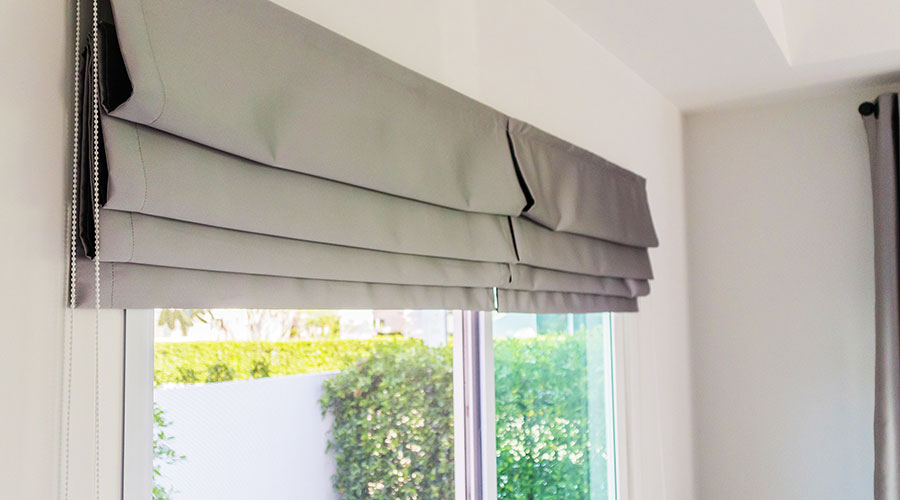
What is the installation process?
The installation process involves several steps and can vary slightly depending on whether you’re installing ready-made blinds or custom-made ones. Here’s a general outline of the installation process:
Tools and Materials Needed:
- Roman blinds
- Mounting brackets (usually included with the blinds)
- Screws and anchors (appropriate for your wall or window frame type)
- Level
- Screwdriver
- Measuring tape
Installation Steps
- Measure and Mark: Start by measuring the width of your window or the area where you want to install the window treatment. Mark the desired height for the blinds, ensuring that they will clear any window handles or obstacles when raised.
- Bracket Placement: Position the mounting brackets at the marked height, ensuring they are level. For wide windows, you may need additional brackets for support. The brackets should be spaced evenly to distribute the weight of the blinds.
- Secure Brackets: Using the appropriate screws and anchors for your wall or window frame type, secure the brackets in place. Make sure they are firmly attached and level.
- Attach Headrail or Header Rail: For variations with a headrail or header rail, secure it to the mounting brackets. This rail holds the blinds in place and allows for smooth operation. Follow the manufacturer’s instructions for attaching the headrail.
- Hang the Blinds: Depending on the style, you may need to insert the cords or lift mechanism through the header rail or attach the fabric directly to the rail. Ensure that the blinds are evenly distributed and hang properly.
- Test Operation: Before finishing the installation, test the operation. Ensure they raise and lower smoothly and that they are level when in the closed position.
- Safety Considerations: If you have corded variations, it’s important to secure the cords properly to prevent any safety hazards, especially if you have children or pets. Many blinds come with safety devices for this purpose.
- Final Adjustments: Make any final adjustments to the blinds’ position and operation to ensure they are functioning correctly and look aesthetically pleasing.
- Clean-Up: Remove any debris or packaging materials from the installation area.
- Enjoy Your Blinds: Once the installation is complete, you can enjoy your newly installed blinds in Brisbane, adjusting them as needed to control light and privacy.
If you’re not comfortable with the installation process or have custom-made blinds, it’s advisable to hire a professional installer to ensure a proper and secure installation. To learn more about our installation services, reach out on (07) 3376 5555 today.



























